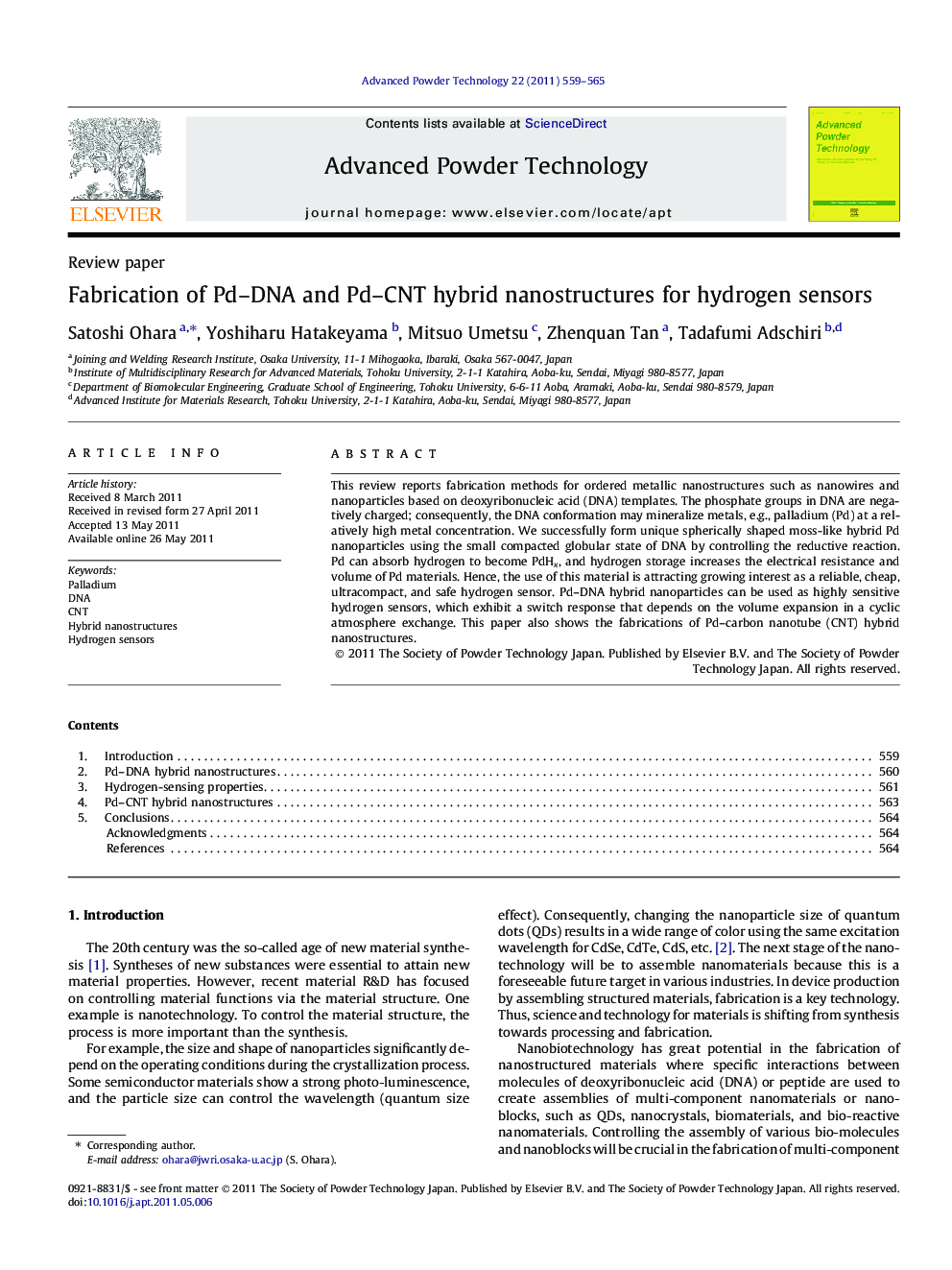| Article ID | Journal | Published Year | Pages | File Type |
|---|---|---|---|---|
| 144695 | Advanced Powder Technology | 2011 | 7 Pages |
This review reports fabrication methods for ordered metallic nanostructures such as nanowires and nanoparticles based on deoxyribonucleic acid (DNA) templates. The phosphate groups in DNA are negatively charged; consequently, the DNA conformation may mineralize metals, e.g., palladium (Pd) at a relatively high metal concentration. We successfully form unique spherically shaped moss-like hybrid Pd nanoparticles using the small compacted globular state of DNA by controlling the reductive reaction. Pd can absorb hydrogen to become PdHx, and hydrogen storage increases the electrical resistance and volume of Pd materials. Hence, the use of this material is attracting growing interest as a reliable, cheap, ultracompact, and safe hydrogen sensor. Pd–DNA hybrid nanoparticles can be used as highly sensitive hydrogen sensors, which exhibit a switch response that depends on the volume expansion in a cyclic atmosphere exchange. This paper also shows the fabrications of Pd–carbon nanotube (CNT) hybrid nanostructures.
